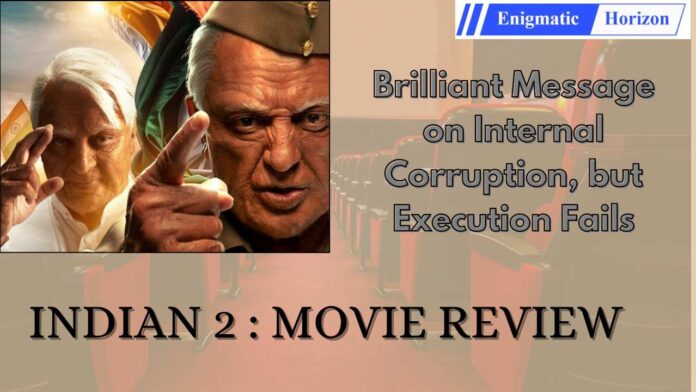Robin Bhuyan
Fans of S. Shankar has been waiting for years for the highly anticipated film Indian 2 (Hindustani 2), which was originally scheduled to release in early 2020, but got delayed due to various reasons. Starring Kamal Haasan in the lead role, the film also features other actors such as Siddharth, Rakul Preet Singh, Gulshan Grover, Zakir Hussain and more.
Shankar is one of India’s most well-known directors and is known for giving us some of the best vigilante thrillers and socio-political movies, such as Nayak, Anniyan (Aparichit) and Sivaji the Boss. Indian, which released in 1996, revolved around the story of Senapathy, a freedom fighter who had fought in Azad Hind Fauz. The film showed the dedication of Senapathy in saving his country from corruption, even if it means killing his own son.
Warning: Spoilers ahead
In India 2, which takes place in the modern day, Senapathy is shown to be living in Taiwan, where his hero Subhash Chandra Bose, supposedly died. Surprisingly, Senapathy is not just still alive, but he is also physically super fit and active, and even running his own martial arts school. Sadly, the film doesn’t give any logical explanation as to how he has managed to live this long, nor does the film explain why the police was unable to hunt him down, when a random man tracked him down so easily.

Despite Kamal Haasan’s noteworthy performance, the first half of the film can be called quite tedious. The songs are noisy and needless, and the film is filled with cringeworthy dialogues and performances, which we have seen in numerous vigilante films. It makes us wonder if S. Shankar did it intentionally, because we definitely didn’t expect this kind of content from someone who has given us films like Nayak and Robot. In most of the first half, Senapathy goes on killing one corrupt individual after the other, but the way things are shown- neither do we connect with his journey, nor we feel any hatred for any of the villains.
However, the film does present a unique and exceptional concept. In his speech, Senapathy asks people not just to put blame on others, but to look at the corruption within themselves and their own families. Surprisingly, his speech has a positive impact, and youths start reporting corruption cases in their own families, even leading to their parents’ arrests.
The last thirty minutes of the film can be considered the best part of the film, which makes it worth the torture. The negative impact of Senapathy’s actions leads Siddharth’s character Chitra Aravindan and his friends to distance themselves from him. The film effectively shows how we all desire a corruption-free India, but the common public is unwilling to acknowledge the corruption within themselves. It might seem exaggerated, but by the end of the film, the public turns against Senapathy, a freedom fighter they once cheered for, just because his actions negatively impacted their lives.
The film highlights the hypocrisy of the common public. We do claim that we want a corruption-free country but we will turn against those fighting corruption if it inconveniences us. If a wife commits suicide due to her husband’s corruption, instead of blaming the husband, people blame the son for reporting his father’s corruption—a decision which was already for him to make.
Another interesting thing about the film is how it shows the power of Varma Kalai, one of the ancient Indian healing and martial arts techniques. However, at times, the way it is used, makes us wonder – are they showing its brilliance, or are they making fun of it?

Despite this brilliant concept shown, the film’s execution was really poor, and we end up wondering – Why? An idealistic teacher jumps out of a building the instant she was charged falsely with tampering her mark sheets. A student kills himself just because of lack of money to pay a loan. A rich Gujrati gold tycoon is shown to live in a building that is entirely made out of gold. The way the characters behave seem quite irrational and it seems forced, and despite taking seven years to make this film, unfortunately S. Shankar disappoints us with Indian 2.
A director like Shankar could have shown this concept of internal hypocrisy brilliantly, but the execution was so poor that some viewers might even find it hard to keep their eyes open, especially during the first half.
At the end credits, we know that a third part is coming out last year. Let’s hope it is better, and we get to see the brilliant side of S. Shankar that we haven’t seen for years.
Rating : 5 out of 10 stars
